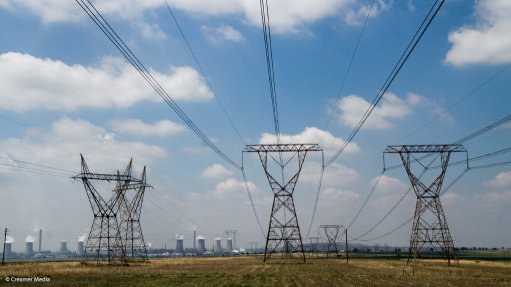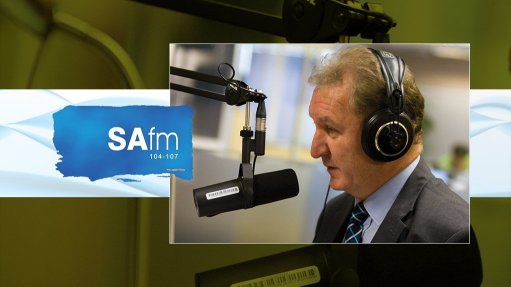Huawei intent on unlocking potential of networks through commercialisation of 5.5G
Following the success of fifth-generation (5G) technology over the past five years, information and communication technology (ICT) giant Huawei aims to unlock the potential of networks and create new growth opportunities with its commercialisation phase of 5.5G, or 5G Advanced.
“5G is on the right path to business success,” says Huawei corporate senior VP and ICT sales and service president Li Peng, explaining that five years after 5G’s commercialisation in 2019, it had already gained 1.5-billion users worldwide, compared with the nine years it took for fourth-generation to reach the same milestone.
Huawei board member and ICT products and solutions president Yang Chaobin highlighted, at a launch event at the Mobile World Congress (MWC), held in Barcelona, Spain, in February, the world’s rapid move from the digital era and into the intelligent era.
Speaking at the company’s 5.5G launch, he pointed to the 100 years it took the industrial era to add 30% to global gross domestic product (GDP), compared with the digital era, from 2000, which took 20 years to achieve that same 30% addition to GDP.
The intelligent era, from 2025, is expected to take just five years to reach the same contribution.
However, higher network requirements are needed for this intelligent world, such as uplink ultrabroadband, real-time broadband communication and full-scenario Internet-of-Things (IoT), driving the rapid evolution to 5.5G, enabling innovative application scenarios and business models and contributing to the rising intelligent economy, which is expected to be worth more than $18.8- trillion by 2030.
The new transformative capabilities of 5.5G, including deterministic latency, precise positioning and passive IoT, are expected to create more opportunities for carriers in the business-to-business market and boost the continuous innovation of technology that has improved carriers’ network productivity over the past 30 years.
After three years of rapid development, 5.5G has progressed from vision to reality, with all of the standards, services, products, devices, businesses, and policies now ready, Peng says, noting that leading carriers have already verified advanced 5.5G capabilities on commercial networks.
“Their tests cover a wide range of scenarios, including smart connections for people, homes, vehicles and stadiums. Further, more and more 10GB smart cities powered by 5.5G are popping up in locations worldwide.”
Huawei Wireless Solution president Cao Ming points to ten times enhanced capabilities, with 5.5G offering 10 Gb/s downlink and 1 Gb/s uplink, as well as enabling 100-billion connections.
Commercialisation of 5.5G is now accelerating globally, with China now ready to commercialise across dozens of provinces and municipalities, he says.
The Middle East was the first to commercialise at scale and there are 5.5G benchmarks across regions in Europe, Asia and Latin America.
“As all industry elements are ready, we have entered the first year of 5.5G commercialisation. Huawei’s full series of 5.5G products and solutions, with Native Giga and Native Green capabilities, help operators from around the world to achieve multipath 5.5G evolution across all bands.”
At MWC, Huawei launched its 5.5G intelligent core network solution, an important part of 5.5G, which incorporates service intelligence, network intelligence and operations and maintenance intelligence, along with a full series of 5.5G products and solutions for a wide range of different scenarios, as well as industry’s first Telecom Foundation Model, which will help carriers maximise the value of their networks, according to Huawei Cloud Core network product line president George Gao.
Further, as 5.5G, artificial intelligence (AI) and cloud converge, carriers can unlock the potential of new applications and capabilities, says Peng, adding that carriers worldwide should focus on high-quality networks, multi-dimensional monetisation, emerging services and generative AI to leverage these opportunities.
High-quality networks remain the foundation of success, with the traffic generated by mobile users expected to significantly increase, allowing carriers with strategic goals incorporating the construction of high-quality 5G networks to maximise the value of traffic.
“As the ICT industry sees more innovation in smart applications, demand for a reliable network experience across multiple dimensions will grow. In particular, guaranteed uplink speed, Quality of Service and latency will be critical to meet the diverse needs of consumers and industry customers. This will present carriers with incredible new growth opportunities, opening up new value streams worth hundreds of billions of dollars.”
Currently, 20% of global mobile subscribers are using 5G, generating 30% of all mobile traffic and contributing to 40% of mobile service revenue, Peng says.
Further, 5G has also been adopted among many industries and, in China, for example, more than 50 000 private 5G network use cases have entered commercial use in over 50 industries.
While the foundations can be further maximised, new emerging services enable long-term sustainable growth.
“New Calling, cloud phones and glasses-free three-dimensional are getting more and more attention from consumers. For example, New Calling’s value-added functions like virtual avatars are becoming quite popular. Users are also willing to pay more for services that deliver real-time experience, such as one-stop car insurance claims.”
This emerged as generative AI drives the mobile industry into the era of all intelligence, with next-generation AI phones having more powerful storage, display and imaging capabilities, Peng continues.
The AI-generated content applications powered by these phones, which the International Data Corporation forecasts will reach 170- million in 2024, accounting for 15% of all smartphone shipments, will power the creation of over 100-billion gigabytes of data and drive over one-trillion gigabytes of data traffic, creating new opportunities for carriers.
Huawei predicts that, in 2026 alone, AI will be used to produce over 250-billion images and 70-million videos, completely redefining the world’s approach to content creation.
Generative AI is already powering new types of connected objects and scenarios, such as digital humans and intelligent cars.
These new scenarios require better infrastructure, including new models for cooperative storage and computing between cloud, edge and devices.
Partnerships
Meanwhile, with the 2024 commercial launch of 5.5G, Huawei is collaborating with operators and partners around the world to pursue new innovation in networks, cloud and intelligence.
Comments
Press Office
Announcements
What's On
Subscribe to improve your user experience...
Option 1 (equivalent of R125 a month):
Receive a weekly copy of Creamer Media's Engineering News & Mining Weekly magazine
(print copy for those in South Africa and e-magazine for those outside of South Africa)
Receive daily email newsletters
Access to full search results
Access archive of magazine back copies
Access to Projects in Progress
Access to ONE Research Report of your choice in PDF format
Option 2 (equivalent of R375 a month):
All benefits from Option 1
PLUS
Access to Creamer Media's Research Channel Africa for ALL Research Reports, in PDF format, on various industrial and mining sectors
including Electricity; Water; Energy Transition; Hydrogen; Roads, Rail and Ports; Coal; Gold; Platinum; Battery Metals; etc.
Already a subscriber?
Forgotten your password?
Receive weekly copy of Creamer Media's Engineering News & Mining Weekly magazine (print copy for those in South Africa and e-magazine for those outside of South Africa)
➕
Recieve daily email newsletters
➕
Access to full search results
➕
Access archive of magazine back copies
➕
Access to Projects in Progress
➕
Access to ONE Research Report of your choice in PDF format
RESEARCH CHANNEL AFRICA
R4500 (equivalent of R375 a month)
SUBSCRIBEAll benefits from Option 1
➕
Access to Creamer Media's Research Channel Africa for ALL Research Reports on various industrial and mining sectors, in PDF format, including on:
Electricity
➕
Water
➕
Energy Transition
➕
Hydrogen
➕
Roads, Rail and Ports
➕
Coal
➕
Gold
➕
Platinum
➕
Battery Metals
➕
etc.
Receive all benefits from Option 1 or Option 2 delivered to numerous people at your company
➕
Multiple User names and Passwords for simultaneous log-ins
➕
Intranet integration access to all in your organisation

















